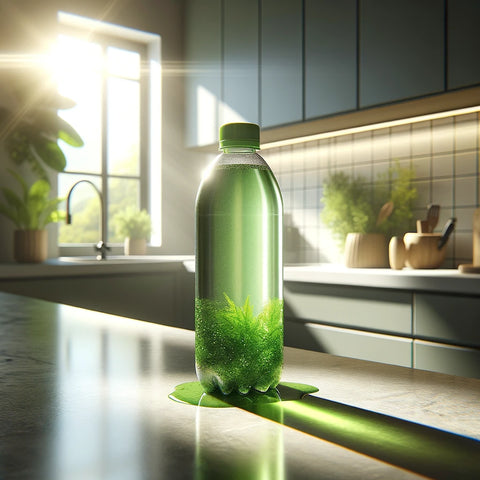In the world of eco-friendly materials, algae is making waves, quite literally. Scientists, engineers, and environmentalists are harnessing this unassuming organism's potential to create sustainable alternatives to plastic, aiming to reduce our carbon footprint significantly. This isn't just about substituting one material for another; it's about a transformative shift in how we view and utilize resources.
Unveiling Algae: Nature's Underwater Powerhouse
Algae, often seen blanketing ponds or calmly floating in oceans, are incredibly diverse and robust organisms. They range from microscopic phytoplankton to giant kelp and can be found in various water bodies worldwide. Algae thrive by photosynthesis, absorbing carbon dioxide and sunlight to grow, making them efficient at sequestering carbon.
Reproduction and Unique Properties
Algae reproduce quickly and in vast numbers, either sexually or asexually, depending on the species. This rapid growth cycle makes them an abundant resource. They possess unique properties, such as high yield biomass and the ability to grow in non-arable land, which positions them as a promising sustainable material.
The Algae-Based Product Wave
The versatility of algae has led to its use in a myriad of eco-friendly products:
- Footwear: Brands like Native with their Bloom sneakers are using algae-based EVA (ethylene-vinyl acetate) for shoe soles, combining comfort with sustainability.
- Loliware’s Biodegradable Straws: These straws are made from seaweed and are designed to replace single-use plastic straws, decomposing naturally without harming wildlife.
- Beyond Straws and Sneakers: Algae is being used in packaging materials, fabrics, and even biofuels, showcasing its wide-ranging applicability.
Environmental Impact: A Breath of Fresh Air
The shift to algae-based products represents a significant stride in environmental conservation:
- Reducing Plastic Pollution: Algae-based products offer an alternative to petroleum-based plastics, notorious for polluting ecosystems and contributing to global warming.
- Carbon Sequestration: Algae naturally absorb CO2, making their cultivation and use a way to combat climate change.
- Biodegradability: Unlike traditional plastics, algae-based materials decompose naturally, reducing waste and toxicity in the environment.
Just Scratching the Surface
The current uses of algae are just the beginning. Its potential extends far beyond what we've seen, with ongoing research exploring even more applications. We're at the cusp of an algae revolution, where this simple organism could be the key to sustainable solutions across industries.
Pros and Cons
Pros:
- Sustainability: Requires less land and water to produce compared to traditional crops.
- Versatility: Suitable for various products, from bioplastics to textiles.
- Eco-Friendly Decomposition: Algae-based materials don’t leave harmful residues as they break down.
Cons:
- Production Costs: Currently, the cost of producing algae-based materials is higher than conventional plastics.
- Scalability: Scaling up production to meet global demand remains a challenge.
The Green Way of Going Green
Algae isn't just a green material; it represents a greener way of living and manufacturing. It's about aligning our consumption with nature's rhythms and capabilities, creating a sustainable loop that benefits both humanity and the planet.
In conclusion, the exploration and expansion of algae-based materials signal a promising shift in our approach to production and consumption. As we delve deeper into the possibilities of algae, we're not just finding alternatives to existing materials; we're paving the way for a more sustainable and harmonious coexistence with our environment. The algae revolution is not just about going green; it's a testament to the innovative spirit of humankind and our ability to find extraordinary solutions in the most ordinary of places.


